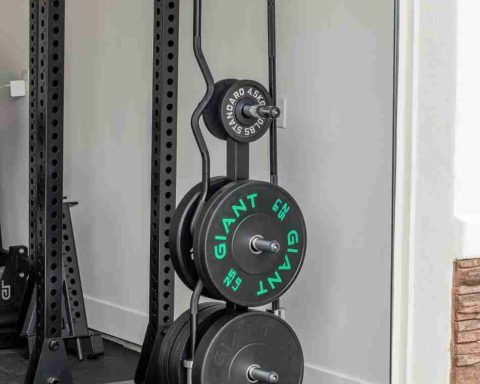The Buzz about Fishing Drones
In recent years, the world of fishing has witnessed a significant transformation. The traditional image of a solitary angler by the water’s edge with a fishing rod and bait has been upgraded, quite literally, to new heights. The game-changer? Fishing drones. These unmanned aerial vehicles have soared into the angling scene, enabling fishermen to explore fishing opportunities that were once beyond reach.
Fishing drones have taken the angling world by storm, and for good reason. Their remarkable capabilities have made them a must-have tool for any serious or recreational fisherman. In this article, we’ll explore the phenomenon of drone fishing, why it has become a trend, and the essentials you need to embark on your own drone fishing adventure.
The Appeal of Drone Fishing
1. Extended Casting Range
One of the most compelling reasons to embrace drone fishing is the ability to cast your line further than ever before. Traditional casting techniques can only take you so far, but with a fishing drone, you can reach fishing spots that were previously out of range. This increased casting distance can be a game-changer for anglers looking to target fish in deeper waters or elusive locations.
2. Access to Remote Fishing Spots
Whether it’s a rocky outcrop, a distant sandbar, or a submerged structure teeming with fish, fishing drones open up the door to remote fishing locations. You can explore hidden gems that are often inaccessible by foot or boat, providing you with an opportunity to discover new fishing grounds that are largely uncharted.
3. Precision in Bait Placement
Fishing drones excel in bait placement. They allow you to drop your bait with pinpoint accuracy, directly over schools of fish or strategic underwater structures. This level of precision significantly enhances your chances of landing a successful catch. Say goodbye to random bait distribution, and welcome a more strategic approach to fishing.
4. Safety and Convenience
For many, traditional shore fishing requires wading into the water or navigating challenging terrains. Fishing drones eliminate these obstacles, offering a safer and more convenient way to enjoy your favorite pastime. They allow you to fish from the shore or a safe vantage point, reducing the physical demands associated with traditional angling.
Essentials for a Successful Drone Fishing Trip
Now that you’re eager to embark on your drone fishing journey, it’s essential to be well-prepared. Here are the key essentials you’ll need for a successful drone fishing trip:
1. A Reliable Fishing Drone
Your drone is your most critical tool in this venture. It should be capable of carrying your bait and fishing line, and it should have a stable flight platform. A GPS-equipped drone is highly recommended for precise navigation. Be sure to choose a drone that matches your specific needs and fishing environment.
2. Standard Fishing Gear
In addition to your fishing drone, you’ll need traditional fishing gear, including a fishing rod and reel. The choice of gear should be tailored to the type of fishing you plan to do, whether it’s freshwater or saltwater fishing.
3. Fishing Line and Leader Material
Select strong and durable fishing line that can withstand the rigors of being transported by a drone and can support the weight of both bait and fish. Additionally, use a leader material designed for your specific fishing environment, whether saltwater or freshwater.
4. Bait and Lures
Choose the right bait for your target fish species. Depending on your preference, you can opt for live bait or lures. It’s a good idea to carry a variety of bait to adapt to changing fishing conditions.
5. Safety Equipment
Safety should always be a priority. Carry life jackets, sunscreen, first-aid supplies, and any other safety equipment you might need. Remember that drone fishing may take you to remote or challenging locations, so being prepared is essential.
6. Backup Batteries
Having spare batteries for your drone is crucial. Since drone fishing often involves longer distances, extra batteries will extend your fishing time and reduce the risk of being stranded without power.
7. Fishing Permits and Licenses
Check local regulations and ensure you have the necessary fishing permits or licenses. It’s crucial to fish legally and responsibly, respecting the rules and regulations of the areas you visit.
8. Drone Fishing Accessories
Consider additional accessories to enhance your drone fishing experience. These may include fishing line release mechanisms, floatation devices for your bait, and landing gears for your drone to prevent it from getting wet during take-off and landing.
Techniques for Drone Fishing
Drone fishing techniques can vary based on the type of fish you’re targeting and the specific fishing environment you’re in. Here are some popular approaches:
1. Drone Bait Dropping
This is the most common drone fishing technique. The drone carries your bait and drops it precisely where you want it. When a fish takes the bait, you can set the hook and start reeling it in.
2. Kite Fishing
In situations where a drone may not be the best choice, some anglers use kites to carry bait and lines. This technique can be particularly effective in areas with strong winds or when you want to keep your drone grounded.
3. Trolling
Trolling with a drone involves dragging bait or lures behind the drone as it moves through the water. This method is typically used for targeting pelagic fish and can be highly effective in the right conditions.
Environmental Considerations
While drone fishing is an exciting and innovative approach, it’s essential to be environmentally conscious and responsible. Here are some guidelines to follow:
Respect Wildlife: Avoid disturbing wildlife when flying your drone and fishing. Maintain a safe distance from birds, marine mammals, and other creatures.
Proper Disposal: Dispose of fishing line, bait containers, and any trash responsibly. Ensure that nothing ends up polluting the environment, including the waters you fish in.
Leave No Trace: Be mindful of your surroundings and leave no trace of your presence. Treat the natural environment with respect and care, avoiding any damage to fragile ecosystems.
Check Local Regulations: Familiarize yourself with local fishing and drone flying regulations. Some areas may have restrictions in place to protect sensitive habitats, and it’s crucial to abide by these rules.
In conclusion, drone fishing has reshaped the world of angling by offering extended casting range, access to remote fishing spots, precise bait placement, and enhanced safety and convenience. It opens up new horizons for anglers looking to explore uncharted waters and discover fresh fishing opportunities. As the popularity of drone fishing continues to grow, the future holds the promise of even more exciting developments and opportunities for anglers worldwide. Enjoy the journey and always fish responsibly and ethically.






